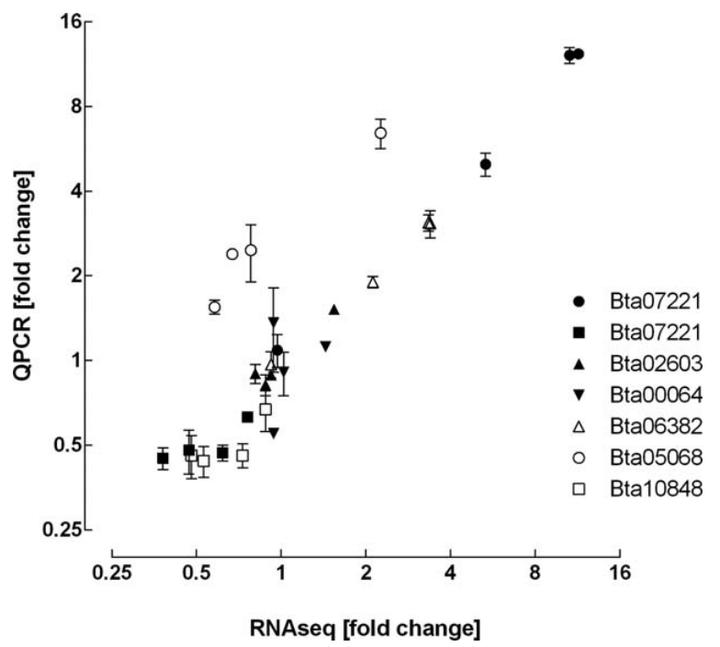Use of the synergist piperonyl butoxide can slow the development of alpha‐cypermethrin resistance in the whitefly Bemisia tabaci

Abstract
The development of insecticide resistance in insect pests of crops is a growing threat to sustainable food production, and strategies that slow the development of resistance are therefore urgently required. The insecticide synergist piperonyl butoxide (PBO) inhibits certain insect detoxification systems and so may delay the evolution of metabolic resistance. In the current study we characterized resistance development in the silverleaf whitefly, Bemisia tabaci, after selection with either a neonicotinoid (thiacloprid) or pyrethroid (alpha‐cypermethrin) insecticide alone or in combination with PBO. Resistance development was significantly suppressed (> 60%) in the line selected with alpha‐cypermethrin + PBO compared to the line selected with alpha‐cypermethrin alone. RNA sequencing (RNAseq) analyses revealed an increase in frequency of a knock‐down resistance mutation but no differentially expressed genes were identified that could explain the sensitivity shift. No significant difference was observed in the level of resistance between the thiacloprid and thiacloprid + PBO selected lines, and RNA sequencing (RNAseq) analyses revealed that the cytochrome P450 monooxygenase CYP6CM1, known to metabolize neonicotinoids, was significantly upregulated (>10‐fold) in both lines. The findings of this study demonstrate that PBO used in combination with certain insecticides can suppress the development of resistance in a laboratory setting; however, the mechanism by which PBO supresses resistance development remains unclear.